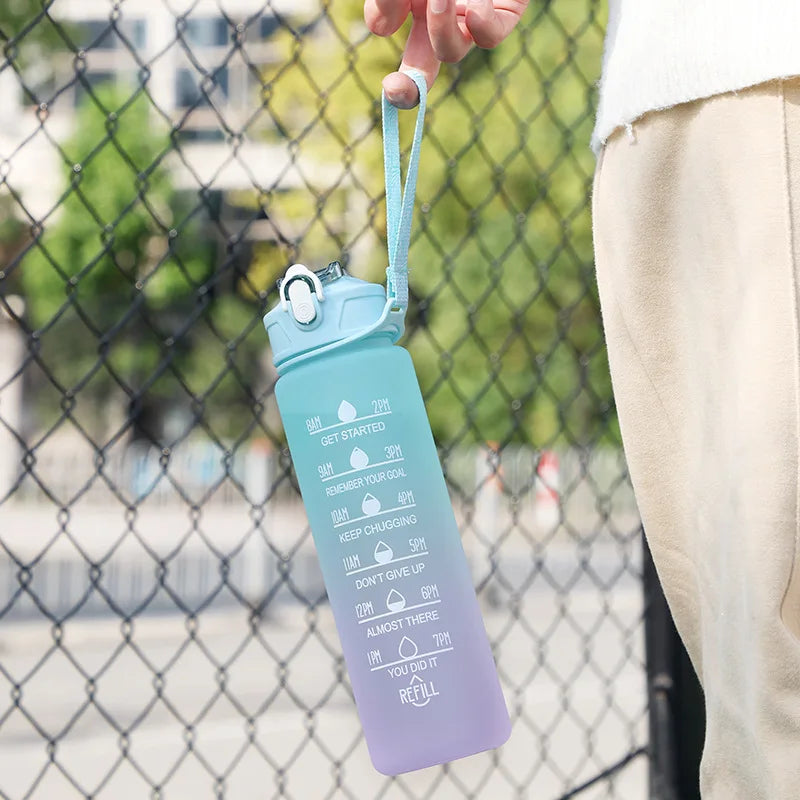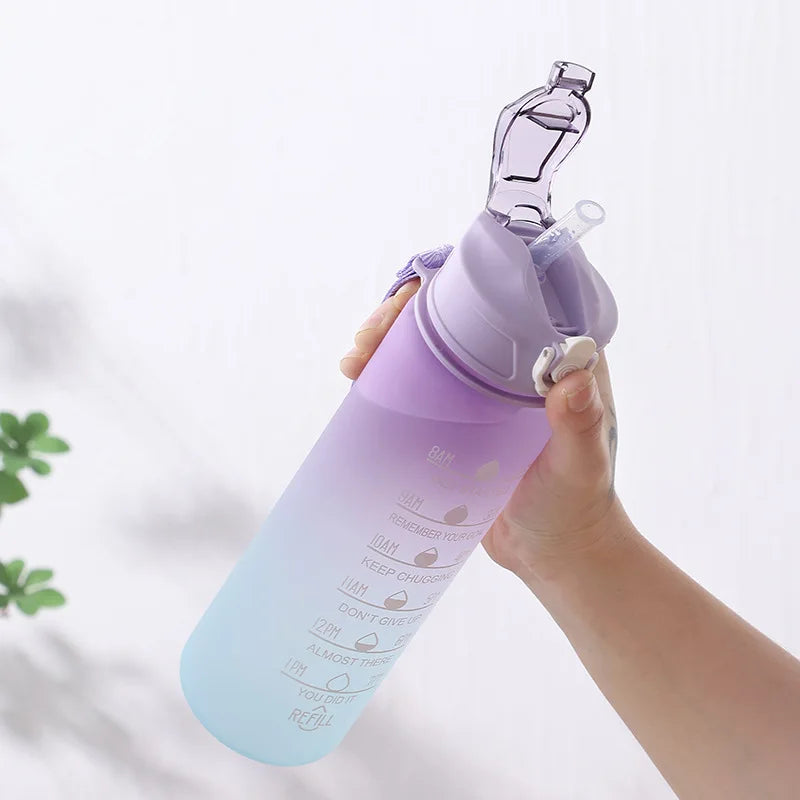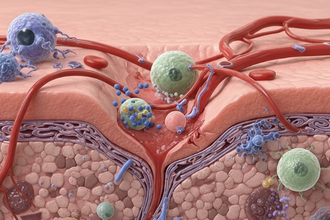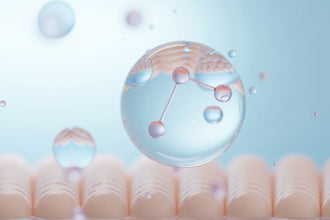
Understanding the Stages of Bruise Healing
Bruising. We've all experienced it and will again in the future. But what really happens during the bruising process and how can we optimize your recovery and minimize pain?
This HealFast Blog post will first dive into the medical background behind bruising and then what you can do to heal faster.
Bruising – why it happens?
Bruising is common whether, from medical procedures, surgeries, sports injuries, or that nasty toe-stubbing on the bedpost that haunts your dreams, we all get them!
And in all cases, they are part of the body's healing response process that is relatively consistent across all wounds and can be optimized for faster healing if you know how they work.
What is a bruise?
A contusion, which is the medical word for a “bruise”, is a skin discoloration that results from blood vessels leaking under the skin after trauma. Bruises can occur after:
-
Vigorous exercise, such as athletics, contact sports, or weight lifting.
-
Surgery or medical procedures where blood vessels and tissues are disrupted.
-
Any kind of trauma, particularly blunt trauma can damage blood vessels which result in a bruise.
Why do bruises change color?
Generally, the whole process of bruise healing takes about 2-3 weeks. During this time, a contusion goes through several predictable changes that allow us to estimate its age via its color.
The Stages of Bruise Healing
1. Red to Deep Purple
In the initial phase, the bruise will appear red due to the fresh blood under the skin. It then darkens to a deep purple within hours.

2. Blue or Black
After several days, the bruise will turn blue/purple. This occurs as tissue swelling around the injury site causes oxygen to get cut off. When there is no oxygen, hemoglobin (that carry iron and oxygen in the blood) changes color from red to blue, causing a mainly purple color.
3. Green
Within 5-7 days, hemoglobin breaks down into other compounds, turning the bruise green.

4. Yellow to Brown
Finally, as the body processes the blood products, the bruise changes to a yellow or brown hue, signaling the end of the bruise color stages.

Image Source: WebMD
How to treat a Bruise?
It’s important to know how bruises work so you can best prepare to treat them for optimal recovery.
To control pain, bleeding, and inflammation, keep the muscle in a gentle stretch position and remember treating a bruise is most effective right after the injury or intervention.
Immediate Remedies for Bruise Recovery
Cold Compress
Applying cold within the first 24 hours constricts blood vessels, reducing blood flow to the area and minimizing the size of the bruise.
Warm Compress
After 48 hours, a warm compress can stimulate circulation and blood flow, speeding up the removal of the trapped blood.
Arnica
This herbal remedy is renowned for its anti-inflammatory properties, making it a favorite for treating bruises.

Vitamin K Cream
Used topically, vitamin K can help accelerate the body's healing process, fading bruises more quickly.
Following the RICE system for bruise healing
-
Rest. Protect the injured area from further harm. Consider protective devices (crutches, sling, brace, etc.) as needed.
-
Ice*
-
Compression. Lightly wrap the injured area in a soft bandage or ace wrap to reduce swelling and further bleeding into the site.
-
Elevation. Raise it to a level above the heart. This will decrease swelling in the extremity by allowing fluids to drain with gravity away from the injury site.
Regarding ice usage, it is best used during the initial trauma and applied to the area for 20-30 minutes to decrease inflammation, reduce swelling, and constrict the blood vessels from further leakage. However, after the initial 36-48 hours, you should consider using warmth to increase the blood flow in the area to help resorb the accumulated blood.
After a surgical intervention, your doctor may give you non-steroidal anti-inflammatory drugs (NSAIDs), such as ibuprofen or Tylenol for pain relief.
As with any pain medication, whether doctor prescribed or self-administered, take only enough to take the edge off the pain, but not erase it completely. Pain serves as an important signal telling you when not to push yourself.
What to watch out for:
-
If you are taking blood-thinning medication, bruising may be more common
-
Frequent or unexplained bruises, especially if accompanied by frequent nosebleeds or bleeding gums may indicate a bleeding disorder or overdose of blood-thinning medication
Comprehensive Recovery with the Right Supplements
While natural remedies offer localized relief, the body's overall nutritional state plays a crucial role in healing.

Investing in a comprehensive post-op injury recovery formula can provide your body with the necessary nutrients to heal efficiently and reduce complications.
Reduce pain and boost healing with Bromelain
There is mounting evidence supporting the use of bromelain to improve healing times associated with bruises, contusions, and hematoma recovery.
One placebo-controlled study of 146 boxers with bruises on the face and hematomas on the orbits, lips, ears, chest, and arms; found a complete clearing of bruises in 78% of the group treated with bromelain, compared to 3% of the placebo group. [1] Remarkably, this was seen at time = 4 days, compared to the baseline expected recovery timeline of a week or more.
Other studies show that orally administered bromelain reduced edema, bruising, pain, and healing times following trauma and surgical procedures. Bromelain’s pain reduction effects are probably related to its potent anti-inflammatory, anti-edema, and fibrinolytic properties.

In another clinical study, patients with long bone fractures were administered bromelain, which led to less post-operative swelling and ultimately the consumption of fewer analgesics (heavy pain meds) compared to patients given a placebo.
Aside from its documented anti-inflammatory activity, bromelain is a favorite of Plastic Surgeons because of its ability to increase the resorption rate of hematomas. Oral bromelain, given at the time of hematoma results in significantly faster resolution in the treatment group than seen in control groups.
The way Bromelain works is complicated but well documented
I tend to be a skeptic. Unless you show me the proof and working mechanism, I am not going to buy the “it works because it works” rhetoric. For those of you who are like me, here is the proposed mechanism for how Bromelain works with references below for additional reading.
Unfortunately, I will need another post in the near future to dive deeper and explain it in less “science-jargon” terms.
Based on research it appears that Bromelain’s anti-inflammatory and anti-edema effects may be due in part to its dose-dependent partial inhibition of the pro-inflammatory prostaglandin PGE2, its activation of plasmin, and its antagonism or inhibition of bradykinin production. [2,3,4]
Bromelain may also increase tissue permeability, restore drainage, and reestablish circulation by depolymerizing fibrin and possibly by digesting other proteins. [5,6] It has been shown that intravenous bromelain reduced total plasma kininogen by 50% [7]
The mechanism by which bromelain affects hematoma resolution may be via increased serum fibrinolytic activity and inhibition of plasma exudation through inhibition of bradykinin generation.[8] Lastly, Bromelain may also have immunomodulatory effects as well. [9,10]
See? That wasn’t so bad! I will write another post in the future when time permits to better explain and simplify the above.
So what have we learned?
In conclusion - bruising is a part of life. It can be painful, ugly, and a reminder of past actions done wrong.
But with proper preparation and attention, they can be healed quickly. If you are going in for surgery or had an unexpected injury resulting in bruising, you should consider nutrition as one of the main weapons in the fight to heal faster.
Don't forget to follow us on Twitter and Facebook for fast updates and the latest recovery related information. Until next time, stay healthy!
REFERENCES:
1. Blonstein JL. Control of swelling in boxing injuries. Practitioner. 1969;203:206
2. Taussig SJ, Yokoyama MM, Chinen A, et al. Bromelain: a proteolytic enzyme and its clinical application. A review. Hiroshima J Med Sci. 1975;24:185-193.
3. Taussig SJ. The mechanism of the physiological action of bromelain. Med Hypotheses. 1980;6:99-104.
4. Taussig SJ, Batkin S. Bromelain, the enzyme complex of pineapple ( Ananas comosus) and its clinical application. An update. J Ethnopharmacol. 1988;22:191-203.
5. Ako H, Cheung AHS, Matsuura PK. Isolation of a fibrinolysis enzyme activator from commercial bromelain (1). Arch Int Pharmacodyn Ther. 1981;254:157-167.
6. Martin GJ, Ehrenreich J, Asbell N. Bromelain. Pineapple protease with anti-edema-activity.Exp Med Surg. 1962;20:227-247.
7. Barrett AJ, Starkey PM. The interaction of alpha 2-macroglobulin with proteinases. Characteristics and specificity of the reaction, and a hypothesis concerning its molecular mechanism. Biochem J. 1973;133:709-724.
8. Petry JJ. Surgically significant nutritional supplements. Plast Reconstr Surg. 1996;97:233-240.
9. Desser L, Rehberger A, Paukovits W. Proteolytic enzymes and amylase induce cytokine production in human peripheral blood mononuclear cells in vitro. Cancer Biother. 1994;9:253-263.
10. Brakebusch M, Wintergerst U, Petropoulou T, et al. Bromelain is an accelerator of phagocytosis respiratory burst and killing of Candida albicans by human granulocytes and monocytes. Eur J MedRes. 2001;6;193-200.
General Disclaimer: All information here is for educational purposes only and is not meant to cure, heal, diagnose nor treat. This information must not be used as a replacement for medical advice, nor can the writer take any responsibility for anyone using the information instead of consulting a healthcare professional. All serious disease needs a physician.














